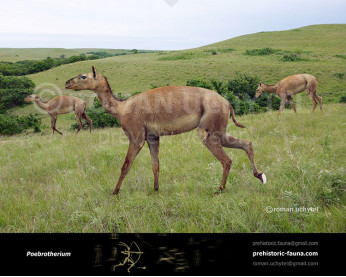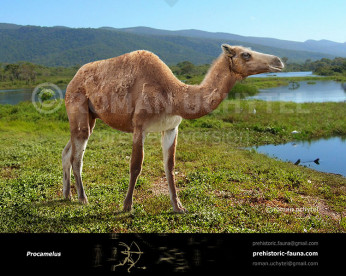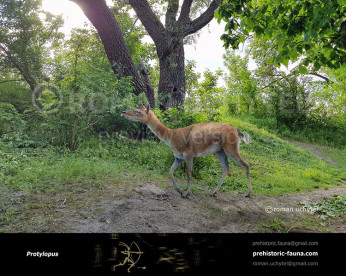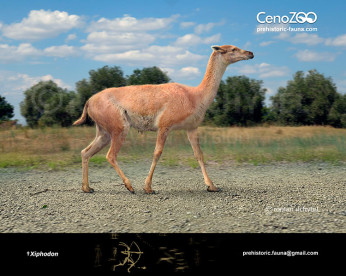Stenomylus
499499
Stenomylus (Stenomylus (Peterson, 1906))
Species: †Stenomylus hitchcocki (Loomis, 1910), †Stenomylus keelinensis (Frick & Taylor, 1968), †Stenomylus gracilis (Peterson, 1907), Stenomylus taylori (Cassiliano, 2008), Stenomylus tubutamensis (Ferrusquia-Villafranca, 1990)
Order: Artiodactyla
Family: Camelidae
Expansion: Oligocene - early Miocene (North America, 30 million years ago)
Dimensions: 1,3 m in length, 61 cm in height, 40 kg of weight
Stenomylus is an extinct genus of miniature camelid native to North America that died out around 30 million years ago. Stenomylus was extremely diminutive compared to other ancient and modern camelids, standing only 61 cm tall on average. It was a slender animal with a long neck, having some resemblance to a modern gazelle. Unlike modern camelids, Stenomylus lacked padding on its hooves and has been compared to the modern pronghorn of North America and the gerenuk of Africa based on theories about its biomechanics.
Оплата
У Вас є кілька зручних способів купівлі зображення: кредитна чи дебетова картка Visa, Mastercard, Maestro; PayPal або банківський переказ
Stenomylus (Stenomylus (Peterson, 1906))
Species: †Stenomylus hitchcocki (Loomis, 1910), †Stenomylus keelinensis (Frick & Taylor, 1968), †Stenomylus gracilis (Peterson, 1907), Stenomylus taylori (Cassiliano, 2008), Stenomylus tubutamensis (Ferrusquia-Villafranca, 1990)
Order: Artiodactyla
Family: Camelidae
Expansion: Oligocene - early Miocene (North America, 30 million years ago)
Dimensions: 1,3 m in length, 61 cm in height, 40 kg of weight
Stenomylus is an extinct genus of miniature camelid native to North America that died out around 30 million years ago. Stenomylus was extremely diminutive compared to other ancient and modern camelids, standing only 61 cm tall on average. It was a slender animal with a long neck, having some resemblance to a modern gazelle. Unlike modern camelids, Stenomylus lacked padding on its hooves and has been compared to the modern pronghorn of North America and the gerenuk of Africa based on theories about its biomechanics.

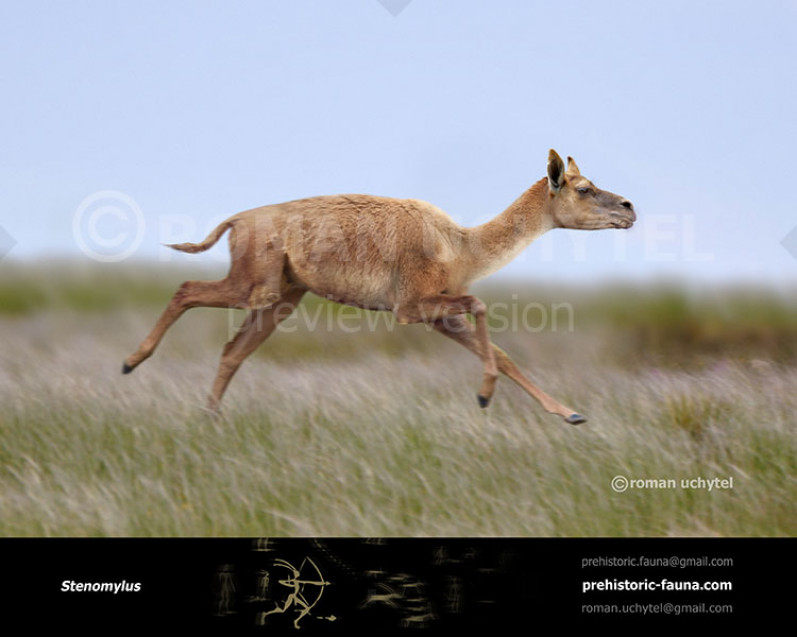
-346x277.jpg)
